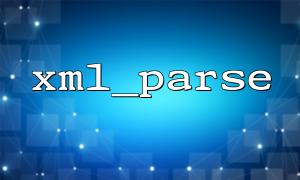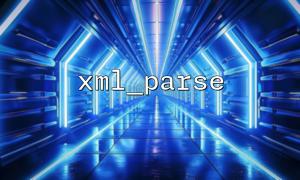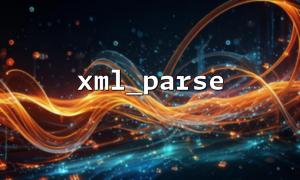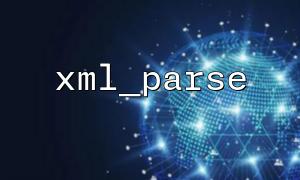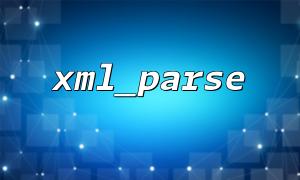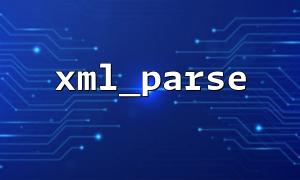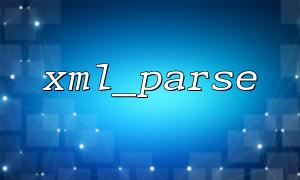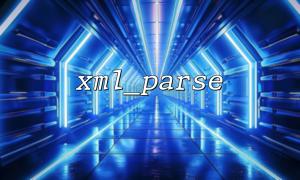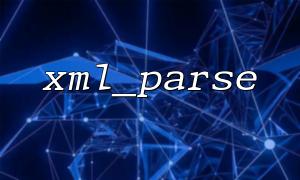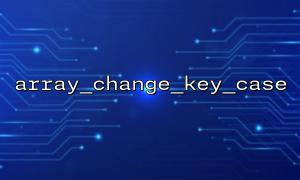PHP에서 XML 문서와 함께 작업 할 때 XML_PARSE () 는 낮지 만 강력한 기능입니다. 이벤트 중심 구문 분석 모델에 의존하므로 문서의 시작, 끝 및 문자 데이터에 응답하려면 해당 콜백 기능을 등록해야합니다.
그러나 복잡한 구조를 가진 중첩 된 XML 문서에 직면하여 재귀를 사용하면 데이터 처리가보다 직관적이고 명확하게 만들 수 있습니다. 이 기사는 재귀 및 XML_PARSE () 와 함께 중첩 된 XML 데이터를 구문 분석하는 방법을 소개합니다.
<catalog>
<book id="1">
<title>PHP Basics</title>
<author>John Doe</author>
</book>
<book id="2">
<title>Advanced PHP</title>
<author>Jane Smith</author>
</book>
</catalog>
먼저 파서를 만들고 세 가지 콜백 함수를 설정해야합니다.
startElement () : 파서가 시작 태그를 만날 때 호출;
EndElement () : 파서가 엔드 태그를 만날 때 호출;
문자 data () : 파서가 태그에서 텍스트를 만날 때 호출됩니다.
다음은 완전한 코드 예입니다.
<?php
$xml = <<<XML
<catalog>
<book id="1">
<title>PHP Basics</title>
<author>John Doe</author>
</book>
<book id="2">
<title>Advanced PHP</title>
<author>Jane Smith</author>
</book>
</catalog>
XML;
$parser = xml_parser_create();
$dataStack = [];
$currentData = null;
// 태그 시작
function startElement($parser, $name, $attrs) {
global $dataStack, $currentData;
$element = [
'tag' => $name,
'attributes' => $attrs,
'children' => [],
'value' => ''
];
if ($currentData !== null) {
array_push($dataStack, $currentData);
}
$currentData = $element;
}
// 엔드 태그
function endElement($parser, $name) {
global $dataStack, $currentData;
if (!empty($dataStack)) {
$parent = array_pop($dataStack);
$parent['children'][] = $currentData;
$currentData = $parent;
}
}
// 텍스트 내용
function characterData($parser, $data) {
global $currentData;
if (isset($currentData['value'])) {
$currentData['value'] .= trim($data);
}
}
xml_set_element_handler($parser, "startElement", "endElement");
xml_set_character_data_handler($parser, "characterData");
if (!xml_parse($parser, $xml, true)) {
die(sprintf("XML 실수: %s 에서 %d 좋아요",
xml_error_string(xml_get_error_code($parser)),
xml_get_current_line_number($parser)));
}
xml_parser_free($parser);
// 최종 구조를 인쇄하십시오
print_r($currentData);
?>
구문 분석 후 다음과 유사한 중첩 어레이 구조를 얻게됩니다.
Array
(
[tag] => CATALOG
[attributes] => Array()
[children] => Array
(
[0] => Array
(
[tag] => BOOK
[attributes] => Array ( [ID] => 1 )
[children] => Array
(
[0] => Array ( [tag] => TITLE [value] => PHP Basics )
[1] => Array ( [tag] => AUTHOR [value] => John Doe )
)
)
[1] => Array
(
[tag] => BOOK
[attributes] => Array ( [ID] => 2 )
[children] => Array
(
[0] => Array ( [tag] => TITLE [value] => Advanced PHP )
[1] => Array ( [tag] => AUTHOR [value] => Jane Smith )
)
)
)
)
프론트 엔드 호출 또는 인터페이스 출력을 위해 위의 배열 구조를 JSON으로 쉽게 변환 할 수 있습니다.
echo json_encode($currentData, JSON_PRETTY_PRINT);
XML 문서가 https://m66.net/data/books.xml 과 같은 네트워크에서 나오면 file_get_contents ()를 사용하여 얻을 수 있습니다.
관련 태그:
xml_parse